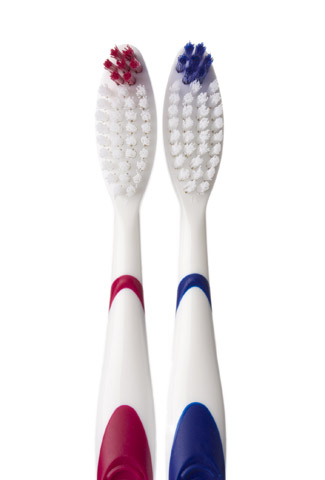|
Which toothbrush should I use? |
In the late 1930s, when nylon bristle toothbrushes were first invented, consumers didn't have many options. Now, it’s different. Most stores that sell oral hygiene products have an extensive selection of different types of toothbrushes on their shelves, including manual and powered varieties. In addition, there is a vast array of toothbrushes to choose from: tapered heads, round, big, small. And then there are bristles to consider: soft, medium or hard.
Generally, people base their toothbrush selection on the color, design, claims made by the manufacturer, or the price. Let’s look at important elements in selecting the optimal manual toothbrush. Who is the toothbrush for? You can choose soft, medium or hard. Most agree that a brush with soft, round-ended or polished bristles is the best as it is gentler on gums, but still achieves the goal of clean teeth. What size head should I get?Many would choose the largest head, thinking that it would cover more of the surface of your teeth. Actually, a small head is often best to make it easier to clean those hard to reach places. A small brush head can also help to save your gums from damage. To ensure your toothbrush has undergone rigorous quality control testing for cleaning effectiveness and safety, ask us for a recommendation. As long as you brush your teeth regularly, and the American Dental Association recommends this to be twice daily for 2 minutes each time, using the proper brushing technique, you should be able to reduce plaque build-up and keep your gums and teeth healthy with either a manual or powered toothbrush. Finally, we recommend you change your toothbrush or toothbrush head every two to three months. Toothbrushes with frayed bristles can damage your gums and will be less effective in cleaning teeth. Still can't decide?Give us a call and we’ll be happy to give you solid advice as to what toothbrush is best for you. |
Copyright © 2011 Sesame Communications
|
